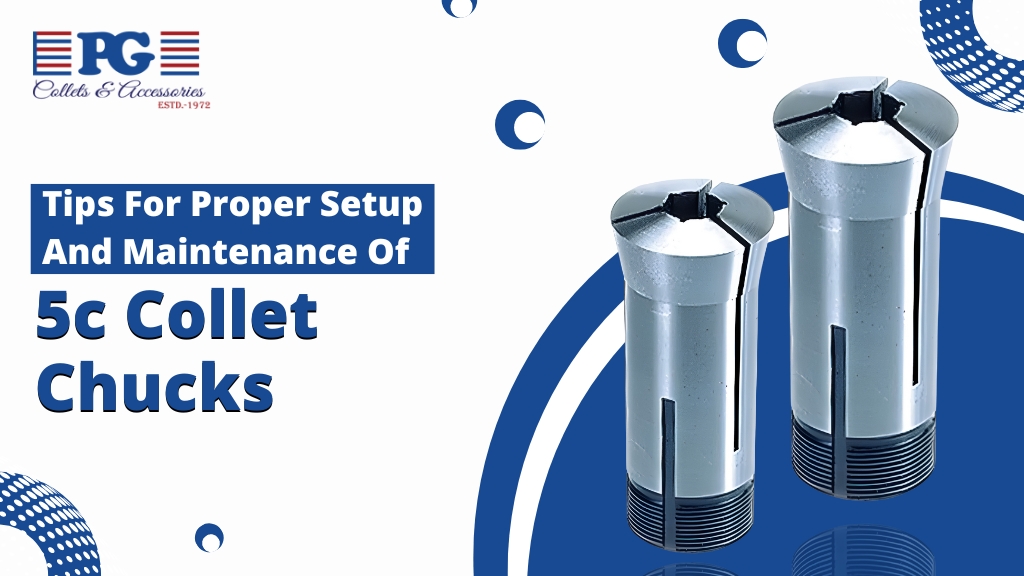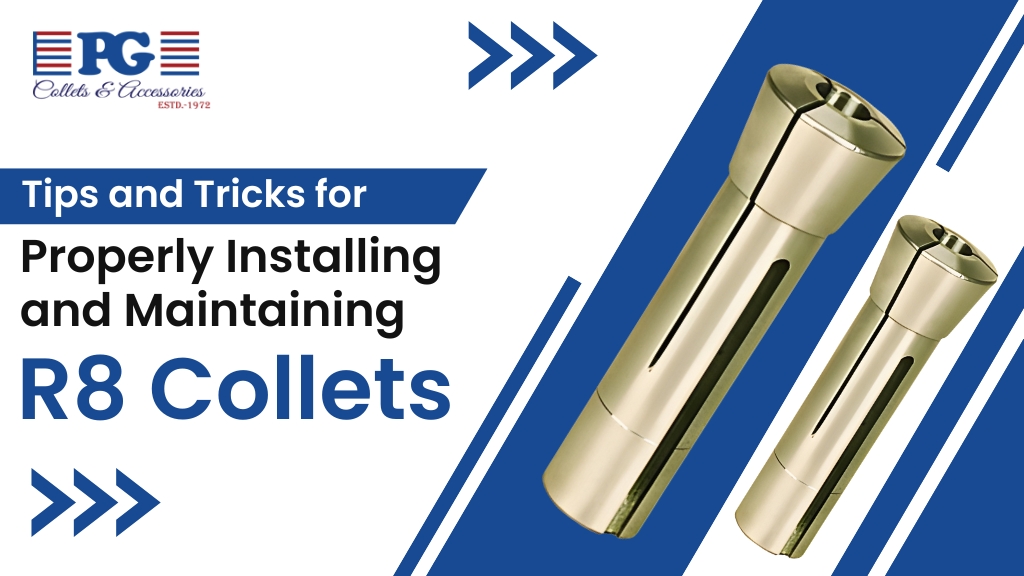Understanding the 5C Collet Chuck
A 5C collet chuck is a type of workholding device commonly used in lathes, grinders, and milling machines. It holds workpieces with a high degree of accuracy, making it ideal for precision machining tasks. The collet, a cylindrical sleeve, exerts uniform pressure around the workpiece, ensuring a secure grip and minimizing runout.
5C collet chucks are essential tools in precision machining, offering high accuracy and repeatability. To maximize the performance and longevity of your 5C collet chuck, proper setup and maintenance are crucial. This blog provides comprehensive tips on how to effectively set up and maintain your 5C collet chuck, ensuring optimal operation and extended service life.
Proper Setup of a 5C Collet Chuck
Selecting the Right Collet
Choosing the appropriate collet for your workpiece is the first step. Ensure the collet size matches the diameter of the workpiece. A mismatch can lead to poor gripping and increased runout, compromising the machining accuracy.
Cleaning and Inspection
Before installation, clean the collet and chuck thoroughly to remove any debris, dust, or old lubricant. Look for any indications of wear or damage on the collet. Even minor defects can affect performance. Use a clean, lint-free cloth and a mild solvent for cleaning.
Proper Installation
- Align the Collet and Chuck: Insert the collet into the chuck, ensuring it is seated correctly. Misalignment can cause excessive runout and uneven wear.
- Tightening the Collet: Use the appropriate torque when tightening the collet. Over-tightening can damage the collet and the chuck, while under-tightening can result in poor workpiece retention.
Check for Runout
After installation, check the collet chuck for runout using a dial indicator. Place the indicator against the workpiece and rotate it. The runout should be minimal, typically within a few thousandths of an inch. If the runout exceeds acceptable limits, recheck the collet and chuck alignment and retighten as necessary.
Maintenance Tips for 5C Collet Chucks
Regular Cleaning
Frequent cleaning is essential to maintain the performance of your 5C collet chuck. Clean the collet and chuck after each use to remove metal chips, dust, and other contaminants. This prevents buildup that can cause uneven wear and reduce accuracy.
Lubrication
Proper lubrication reduces friction and wear on the collet and chuck. Use a high-quality, light machine oil or a specialized collet lubricant. Apply a thin layer to the collet and the internal surfaces of the chuck. Refrain from overlubricating as this may draw in more debris.
Periodic Inspection
Regularly inspect your collet chuck for signs of wear or damage. Check the collet’s gripping surface and the chuck’s internal taper for nicks, scratches, or deformation. Replace worn or damaged components promptly to maintain precision and safety.
Storage
When not in use, store your 5C collet chuck and collets in a clean, dry environment. Use protective caps or covers to prevent dust and moisture from reaching the collet’s surfaces. Proper storage extends the life of the collet chuck and maintains its performance.
Calibration
Periodically calibrate your 5C collet chuck to ensure it maintains accuracy. Calibration involves checking the chuck’s alignment and runout and making necessary adjustments. Professional calibration services can provide precise measurements and adjustments, ensuring optimal performance.
Troubleshooting Common Issues
Excessive Runout
If you notice excessive runout, recheck the collet and chuck alignment. Ensure the collet is seated correctly and tightened to the recommended torque. Inspect the collet and chuck for wear or damage and replace any defective parts.
Poor Gripping
Poor gripping can be caused by a mismatch between the collet and the workpiece size or by a worn collet. Verify that the collet size matches the workpiece diameter. If the collet shows signs of wear, replace it with a new one.
Difficulty in Collet Removal
Difficulty in removing the collet can be due to debris buildup or over-tightening. Clean the collet and chuck thoroughly and apply a light lubricant to facilitate easy removal. Avoid excessive tightening during installation to prevent this issue.
Conclusion
Proper setup and maintenance of your 5C collet chuck are vital for achieving high precision and prolonging the life of your equipment. By following these tips, you can ensure optimal performance, reduce downtime, and maintain the accuracy of your machining operations. Regular cleaning, lubrication, inspection, and calibration are key practices that contribute to the reliable operation of your 5C collet chuck. Invest time in proper maintenance, and your 5C collet chuck will reward you with consistent, high-quality performance.



